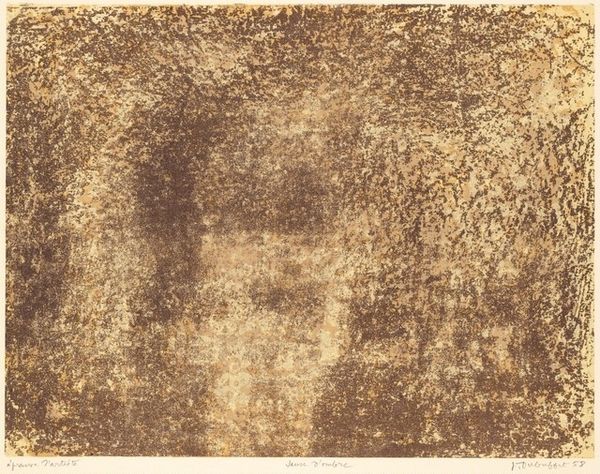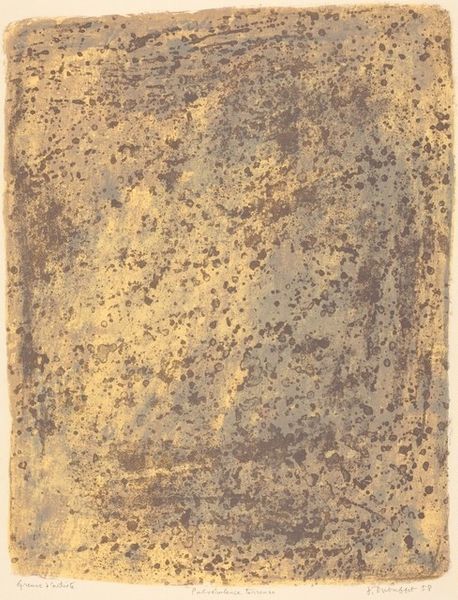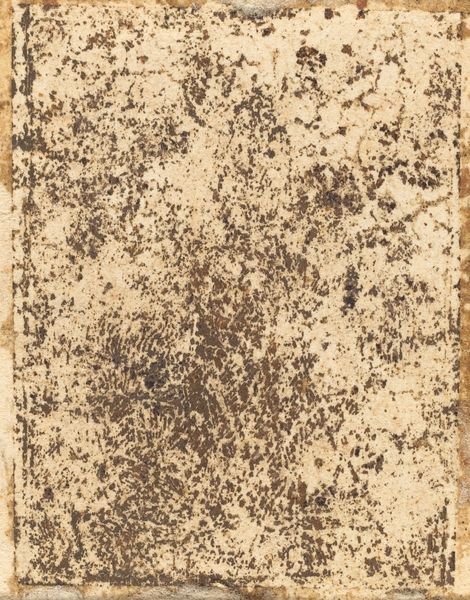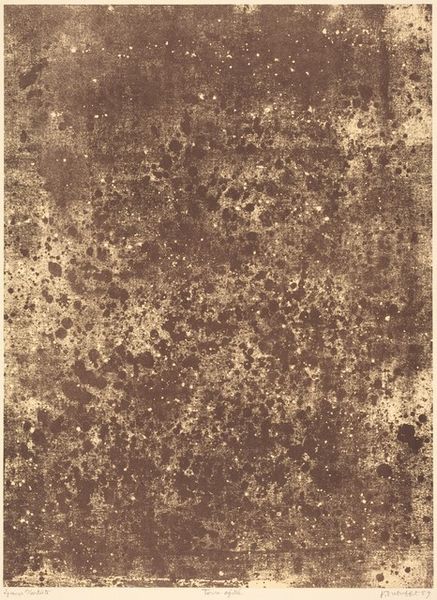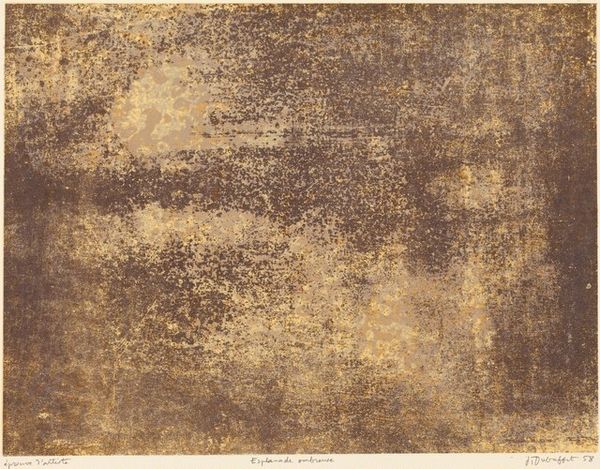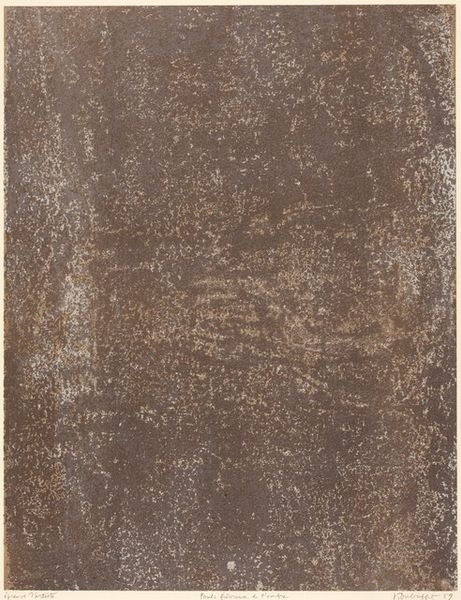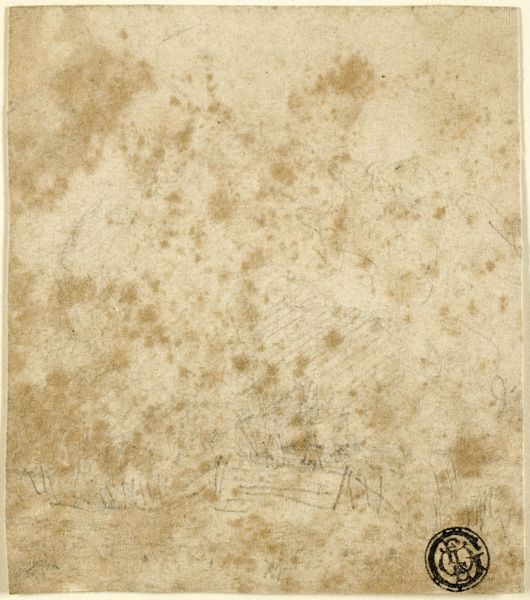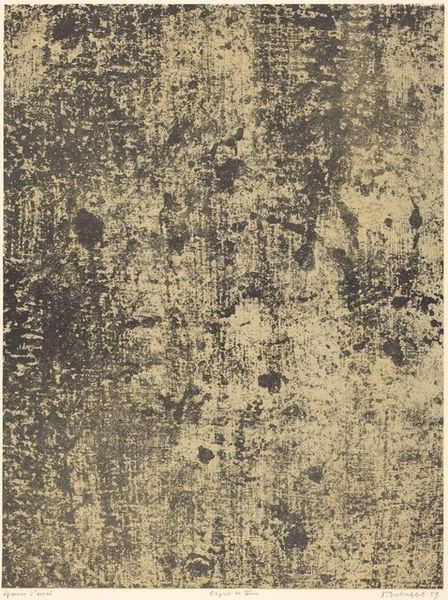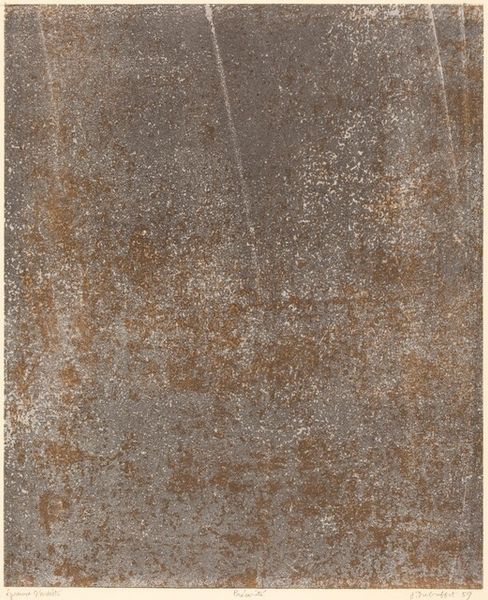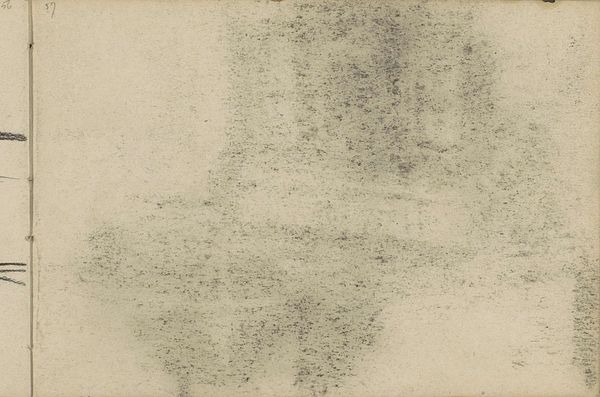
#
organic
# print
#
organic pattern
#
art-informel
#
matter-painting
#
abstraction
#
natural texture
#
organic texture
Copyright: National Gallery of Art: CC0 1.0
Editor: So this is “Chaussee terreuse,” by Jean Dubuffet, created in 1958. It's a print, and it feels very textured… almost like looking at a dried-up riverbed or cracked earth. What do you see in this piece? Curator: I see a palimpsest of cultural memory etched onto the surface. Consider the title: "Earthen Road." Roads are conduits, connecting points, both physically and symbolically. This work isn't just about the appearance of the earth, but perhaps about the journey imprinted upon it. What echoes do you feel within the texture? Editor: I guess the repeated pattern of dots reminds me of tire tracks or footprints. It does feel like something has traveled across this "road." Curator: Indeed. The “Art Informel” movement sought to reject geometric abstraction and embrace raw, often crude, expression. This piece embodies that. It’s a return to primal mark-making. Doesn't the very lack of precise forms evoke something fundamental, perhaps pre-linguistic? A collective experience with the earth itself? Editor: I hadn’t thought about it that way. It’s interesting how the artist is using texture to evoke that shared experience, even if it isn’t a literal landscape. Curator: Exactly. And within those textures are symbols of resilience, perhaps. The earth remembers everything. Even fleeting passage leaves a trace. It's like an imprint on our minds, something persistent, and deeply embedded. Editor: That gives me a completely new perspective on Dubuffet’s work. It's not just about abstraction; it’s about uncovering a deeper cultural history within the material itself. Curator: Precisely. And hopefully it inspires us to consider how future generations may decipher our cultural narrative through our roads.
Comments
No comments
Be the first to comment and join the conversation on the ultimate creative platform.
